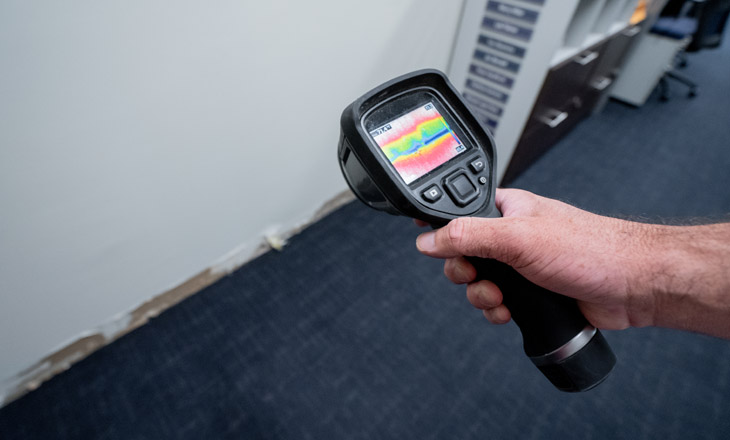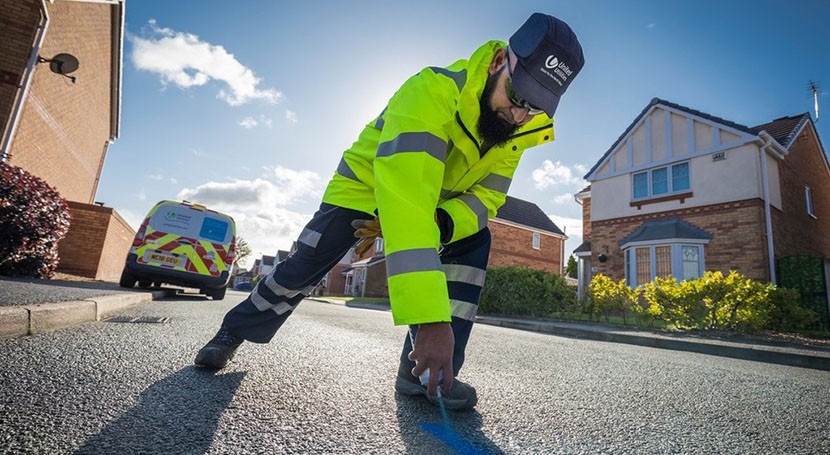Water Leak Detection: How to Identify and Fix Leaks Before They Create Damages
Ingenious Solutions for Early Detection of Water Leaks in Structures and Infrastructure
From sophisticated leak discovery innovations to the deployment of IoT sensors for real-time surveillance, the landscape of leakage avoidance is progressing rapidly. Automated water circulation analysis systems are reshaping exactly how leakages are identified and attended to, paving the way for a proactive strategy to water leakage discovery.
Advanced Leakage Discovery Technologies
Advanced leakage discovery technologies, geared up with sophisticated sensing units and formulas, play an essential role in quickly determining and identifying water leakages in numerous settings. Electromagnetic sensing units can recognize adjustments in electro-magnetic fields created by water, using yet one more layer of leak discovery capacity.

IoT Sensors for Real-Time Tracking
In the world of modern water leakage detection, the assimilation of IoT sensing units for real-time monitoring represents a critical innovation in enhancing aggressive leakage discovery capabilities. These sensing units supply continuous monitoring of water supply, providing real-time information on water circulation rates, pressure variations, and temperature modifications. By leveraging IoT modern technology, these sensors can spot also the smallest anomalies in water use patterns, allowing early recognition of possible leakages before they intensify into major issues.
IoT sensors send data to a centralized platform, where sophisticated formulas analyze the details and create notifies or notices when abnormalities are discovered. This real-time monitoring ability allows building owners or center managers to without delay deal with leakages, reducing water damages, minimizing repair prices, and conserving water sources.
Additionally, IoT sensing units can be incorporated with building monitoring systems, enabling computerized reactions to found leaks, such as shutting off water shutoffs or triggering pumps to alleviate the impact of leaks. Generally, the application of IoT sensors for real-time monitoring dramatically boosts the performance and efficiency of water leakage discovery in buildings and infrastructure.
Maker Learning Algorithms for Leakage Prediction

One key advantage of utilizing machine discovering for leak prediction is its capability to continuously discover and improve its accuracy over time. As more information is gathered and fed into the algorithm, it can improve its forecasts and adapt to altering problems, inevitably enhancing the integrity of leak detection systems.
Furthermore, artificial intelligence algorithms can help in recognizing refined indicators of leaks that may go unnoticed by traditional surveillance techniques. water leak detection. By assessing intricate data embed in real-time, these algorithms can give very early cautions and signals, permitting prompt treatment and preventive upkeep to mitigate potential water damages and connected expenses
Making Use Of Thermal Imaging for Leakage Detection
Thermal imaging technology uses an appealing method for detecting water leaks in different systems and facilities. By making use of infrared radiation and temperature variations, thermal imaging video cameras can identify covert leakages that are read this article not quickly visible to the naked eye. When water escapes from pipes or frameworks, it typically alters the temperature level of the surrounding area, developing temperature level differentials that thermal video cameras can capture. These temperature level irregularities are then converted into noticeable photos, highlighting the specific place of the leakage.
Among the essential advantages of thermal imaging for leak detection is its non-intrusive nature. Unlike typical approaches that may need damaging right into wall surfaces or floors to situate leakages, thermal imaging permits for non-destructive screening. This not only saves time and reduces prices however also decreases disruption to the building or facilities being examined. Furthermore, thermal imaging can rapidly scan big locations, providing an extensive summary of possible leak sources in a timely way. In general, using thermal imaging modern technology enhances the efficiency and accuracy of water leak detection, making it a valuable tool for maintaining the stability of structures and infrastructures.
Automated Water Flow Analysis Systems
Exactly how can automated water circulation evaluation systems reinvent the detection and monitoring of leaks in different systems and facilities? Automated water flow evaluation systems use an aggressive strategy to leakage detection by constantly monitoring water circulation prices and patterns. By developing standard information, these systems can rapidly identify inconsistencies that might show a leak, enabling timely intervention to stop comprehensive damages.
These systems make use of innovative formulas to examine real-time information and provide prompt signals when abnormalities are detected, enabling swift activity to be taken. Furthermore, automatic water circulation analysis systems can be integrated with building administration systems or IoT systems, boosting total effectiveness and allowing remote surveillance capabilities.
In addition, the information accumulated by these systems can be utilized for predictive upkeep purposes, aiding to recognize prospective powerlessness in the infrastructure before leakages occur. In general, the application of automatic water circulation evaluation systems can dramatically enhance explanation leakage discovery and management techniques, inevitably leading to cost savings, decreased water waste, and enhanced sustainability in buildings and framework.

Verdict
In verdict, visit this site the integration of advanced leak detection modern technologies, IoT sensing units, artificial intelligence formulas, thermal imaging, and computerized water flow evaluation systems supplies ingenious options for very early detection of water leakages in buildings and facilities. These innovations allow real-time surveillance, forecast of leaks, and efficient discovery methods to avoid water damages and wastage. Executing these services can aid in preserving the stability and sustainability of water systems in various settings.